-
 Bitcoin
Bitcoin $104,438.3013
3.15% -
 Ethereum
Ethereum $2,495.2733
1.25% -
 Tether USDt
Tether USDt $1.0006
0.04% -
 XRP
XRP $2.1809
3.41% -
 BNB
BNB $646.2511
1.44% -
 Solana
Solana $149.6172
3.32% -
 USDC
USDC $0.9998
-0.01% -
 Dogecoin
Dogecoin $0.1797
4.47% -
 TRON
TRON $0.2768
2.12% -
 Cardano
Cardano $0.6637
4.30% -
 Hyperliquid
Hyperliquid $33.8771
2.05% -
 Sui
Sui $3.1954
8.02% -
 Chainlink
Chainlink $13.5414
4.06% -
 UNUS SED LEO
UNUS SED LEO $8.9393
2.65% -
 Stellar
Stellar $0.2642
2.46% -
 Avalanche
Avalanche $19.5172
2.28% -
 Bitcoin Cash
Bitcoin Cash $396.9612
2.31% -
 Toncoin
Toncoin $3.1449
2.72% -
 Shiba Inu
Shiba Inu $0.0...01249
2.76% -
 Hedera
Hedera $0.1653
3.23% -
 Litecoin
Litecoin $87.3230
2.79% -
 Polkadot
Polkadot $3.9053
1.13% -
 Monero
Monero $325.7668
3.54% -
 Ethena USDe
Ethena USDe $1.0013
0.05% -
 Dai
Dai $0.9998
0.00% -
 Bitget Token
Bitget Token $4.5830
0.93% -
 Pepe
Pepe $0.0...01110
4.53% -
 Pi
Pi $0.6207
2.37% -
 Aave
Aave $251.2358
2.44% -
 Uniswap
Uniswap $6.0406
0.54%
How to use Fibonacci retracement levels to calculate the potential turning points of the band market?
Use Fibonacci retracement to find potential turning points in the band market by identifying key levels from recent highs and lows, and watch price action for confirmation.
Jun 05, 2025 at 11:01 am
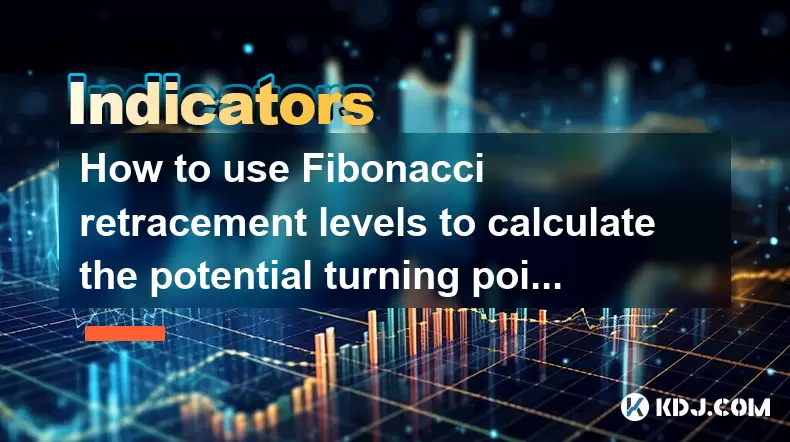
How to Use Fibonacci Retracement Levels to Calculate the Potential Turning Points of the Band Market?
Fibonacci retracement levels are a popular tool among traders in the cryptocurrency market, used to identify potential support and resistance levels. These levels are based on the Fibonacci sequence, a series of numbers where each number is the sum of the two preceding ones. In trading, these levels help predict where a price may reverse or continue in a trend. This article will guide you through the process of using Fibonacci retracement levels to calculate potential turning points in the band market, focusing on cryptocurrencies.
Understanding Fibonacci Retracement Levels
Fibonacci retracement levels are horizontal lines that indicate where support and resistance are likely to occur. They are based on the key Fibonacci ratios of 23.6%, 38.2%, 50%, 61.8%, and 100%. These ratios are derived from the mathematical relationships within the Fibonacci sequence. In the context of the band market, these levels can help traders identify potential entry and exit points.
To apply Fibonacci retracement levels, traders typically use the highest and lowest points of a price movement. For instance, if the price of a cryptocurrency rises from $10 to $20, and then starts to fall, traders will draw Fibonacci levels from $10 to $20. The retracement levels will then be calculated as follows:
- 23.6% retracement: $20 - ($10 0.236) = $17.64
- 38.2% retracement: $20 - ($10 * 0.382) = $16.18
- 50% retracement: $20 - ($10 0.5) = $15
- 61.8% retracement: $20 - ($10 * 0.618) = $13.82
- 100% retracement: $20 - ($10 1) = $10
These levels provide a framework for traders to anticipate potential turning points in the market.
Applying Fibonacci Retracement Levels in the Band Market
To use Fibonacci retracement levels effectively in the band market, follow these steps:
Identify the Trend: First, determine the overall trend of the cryptocurrency you are analyzing. Is it in an uptrend or a downtrend? This will help you select the appropriate high and low points for your Fibonacci retracement.
Select the High and Low Points: For an uptrend, select the most recent significant low and the subsequent high. For a downtrend, select the most recent significant high and the subsequent low.
Draw the Fibonacci Levels: Using a charting tool, draw the Fibonacci retracement levels from the selected high to low points. Most trading platforms have a Fibonacci retracement tool that will automatically calculate and display these levels.
Monitor Price Action: Watch how the price reacts at these levels. If the price bounces off a Fibonacci level, it could indicate a potential turning point. If the price breaks through a level, it may continue to the next Fibonacci level.
Combine with Other Indicators: To increase the reliability of your analysis, combine Fibonacci retracement levels with other technical indicators such as moving averages, RSI, or MACD. This can help confirm potential turning points.
Example of Using Fibonacci Retracement in the Band Market
Let's consider a hypothetical example of a cryptocurrency, Band Protocol (BAND), to illustrate how Fibonacci retracement levels can be used to calculate potential turning points.
Suppose BAND has been in an uptrend, moving from a low of $5 to a high of $15. After reaching $15, the price starts to decline. To apply Fibonacci retracement, you would:
Identify the High and Low Points: The low point is $5, and the high point is $15.
Calculate the Fibonacci Levels:
- 23.6% retracement: $15 - ($10 0.236) = $12.64
- 38.2% retracement: $15 - ($10 * 0.382) = $11.18
- 50% retracement: $15 - ($10 0.5) = $10
- 61.8% retracement: $15 - ($10 * 0.618) = $8.82
- 100% retracement: $15 - ($10 1) = $5
Monitor Price Action: If the price of BAND falls to $12.64 (23.6% retracement) and bounces back up, it could indicate a potential turning point. If the price continues to fall past $12.64, the next level to watch would be $11.18 (38.2% retracement).
Combine with Other Indicators: Suppose the RSI (Relative Strength Index) also indicates that BAND is oversold at $12.64. This confluence of signals could strengthen the case for a potential turning point.
Common Mistakes to Avoid When Using Fibonacci Retracement
While Fibonacci retracement levels can be a powerful tool, there are common pitfalls that traders should be aware of:
Incorrect Selection of High and Low Points: The accuracy of Fibonacci retracement levels depends on correctly identifying the most recent significant high and low points. Using arbitrary points can lead to inaccurate levels.
Overreliance on Fibonacci Levels: Fibonacci retracement levels should not be used in isolation. Always combine them with other technical indicators to increase the reliability of your analysis.
Ignoring Market Context: Always consider the broader market context. If there are significant news events or market trends that could impact the price, Fibonacci levels alone may not provide a complete picture.
Chasing Every Retracement Level: Not every Fibonacci level will act as a turning point. Be patient and wait for confirmation from price action and other indicators before making trading decisions.
Practical Tips for Using Fibonacci Retracement in the Band Market
To maximize the effectiveness of Fibonacci retracement levels in the band market, consider these practical tips:
Use Multiple Timeframes: Analyze Fibonacci retracement levels on different timeframes (e.g., daily, hourly, 15-minute charts) to get a more comprehensive view of potential turning points.
Set Realistic Expectations: Understand that Fibonacci levels are not a guarantee of price movement. They are a tool to help identify potential areas of interest.
Practice and Backtest: Before using Fibonacci retracement levels in live trading, practice on historical data and backtest your strategies to see how well they perform.
Stay Updated with Market News: Keep an eye on news and events that could impact the cryptocurrency market, as these can influence the effectiveness of Fibonacci levels.
Frequently Asked Questions
Q1: Can Fibonacci retracement levels be used for all cryptocurrencies?
A1: Yes, Fibonacci retracement levels can be applied to any cryptocurrency that has a sufficient price history to identify significant high and low points. However, the effectiveness may vary depending on the volatility and liquidity of the specific cryptocurrency.
Q2: How often should I redraw Fibonacci retracement levels?
A2: You should redraw Fibonacci retracement levels whenever there is a new significant high or low in the price movement. This ensures that your levels are based on the most recent data and remain relevant to current market conditions.
Q3: Are Fibonacci retracement levels more effective in bullish or bearish markets?
A3: Fibonacci retracement levels can be effective in both bullish and bearish markets. The key is to correctly identify the trend and use the appropriate high and low points. In a bullish market, focus on retracements from the lows, and in a bearish market, focus on retracements from the highs.
Q4: Can Fibonacci retracement levels predict exact price movements?
A4: No, Fibonacci retracement levels do not predict exact price movements. They provide potential areas where the price may reverse or continue in a trend. Traders should use these levels in conjunction with other technical analysis tools and market indicators to make informed trading decisions.
Disclaimer:info@kdj.com
The information provided is not trading advice. kdj.com does not assume any responsibility for any investments made based on the information provided in this article. Cryptocurrencies are highly volatile and it is highly recommended that you invest with caution after thorough research!
If you believe that the content used on this website infringes your copyright, please contact us immediately (info@kdj.com) and we will delete it promptly.
- Remittix (RTX) is one of the biggest gainers in the crypto market
- 2025-06-07 04:10:12
- BTFD Coin – Staking Rewards That Make You Go “Wow”
- 2025-06-07 04:10:12
- Ethereum (ETH) Price Gap with Bitcoin Could Pave the Way for a Long-Awaited Rebound
- 2025-06-07 04:05:13
- Bitget Lists $RDAC (Redacted Coin), a Highly Anticipated Asset in the Web3 Community
- 2025-06-07 04:05:13
- The meme coin game in 2025 is not for the faint of heart. It’s for the bold. The brave. The bag-holders-turned-millionaires.
- 2025-06-07 04:00:26
- USD1 stablecoin, backed by Donald Trump's World Liberty Financial (WLFI)
- 2025-06-07 04:00:26
Related knowledge
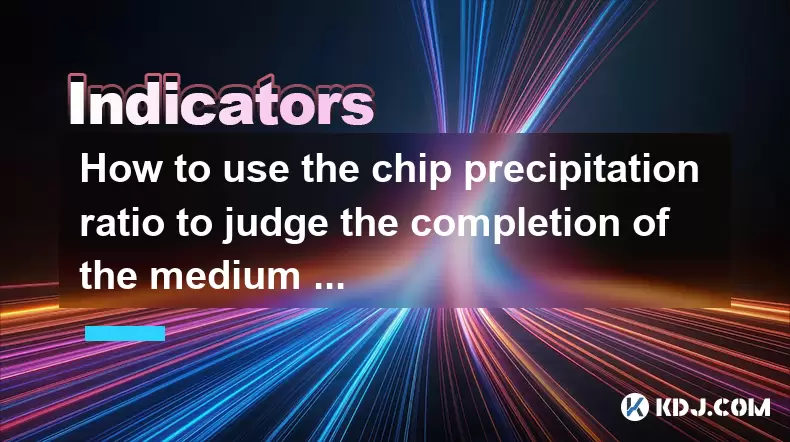
How to use the chip precipitation ratio to judge the completion of the medium and long-term bottom construction?
Jun 04,2025 at 03:36am
The chip precipitation ratio is a crucial metric used by investors to assess the accumulation of chips (or shares) at different price levels over time. This ratio helps in understanding the distribution of chips and can be a powerful tool for determining the completion of medium and long-term bottom construction in the cryptocurrency market. By analyzin...
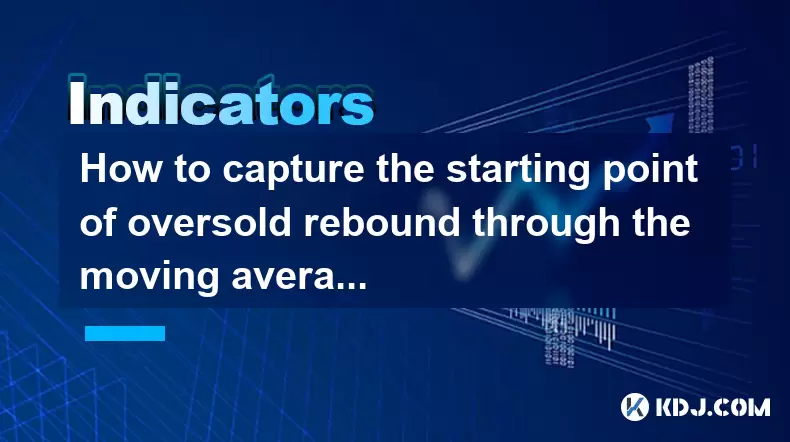
How to capture the starting point of oversold rebound through the moving average gravity reversal strategy?
Jun 04,2025 at 01:01pm
The moving average gravity reversal strategy is a sophisticated approach used by traders to identify potential entry points for buying cryptocurrencies when they are considered oversold. This strategy leverages the concept of moving averages to pinpoint moments when a cryptocurrency might be poised for a rebound. In this article, we will delve into the ...
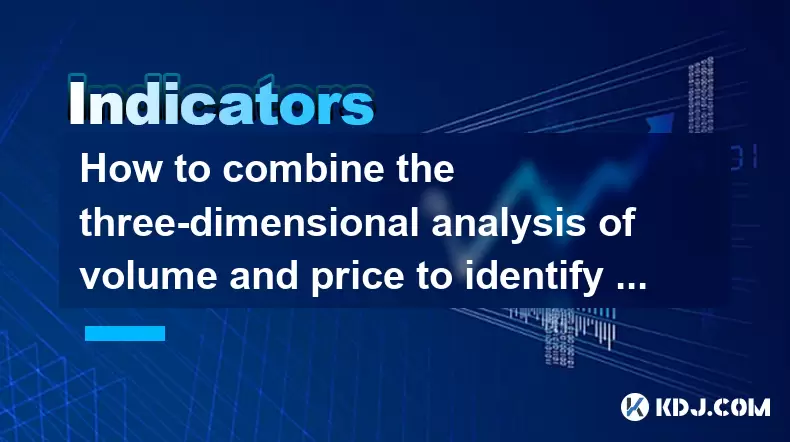
How to combine the three-dimensional analysis of volume and price to identify the golden buying point of breakthrough and retracement?
Jun 03,2025 at 11:42pm
In the dynamic world of cryptocurrencies, identifying the optimal buying points is crucial for maximizing profits and minimizing risks. One effective method to achieve this is by combining three-dimensional analysis of volume and price to pinpoint the golden buying points during breakouts and retracements. This article will delve into how to use this ap...
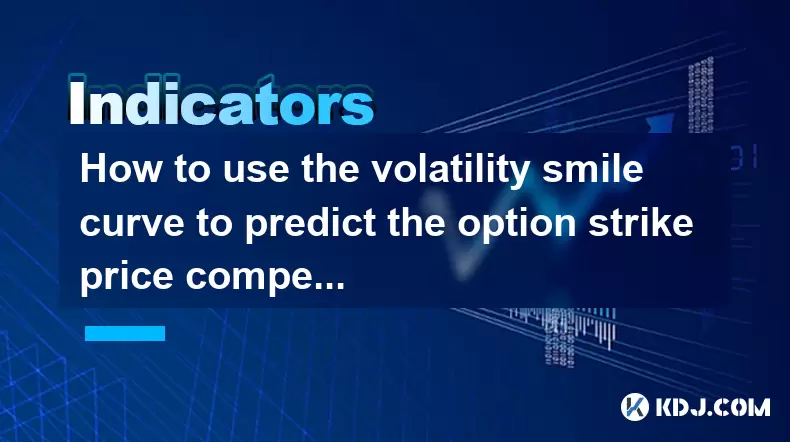
How to use the volatility smile curve to predict the option strike price competition area?
Jun 06,2025 at 01:01pm
The volatility smile curve is a graphical representation that shows the implied volatility of options across different strike prices for a given expiration date. It is called a 'smile' because the curve often takes the shape of a smile, with higher implied volatilities for options that are deep in-the-money or deep out-of-the-money, and lower implied vo...
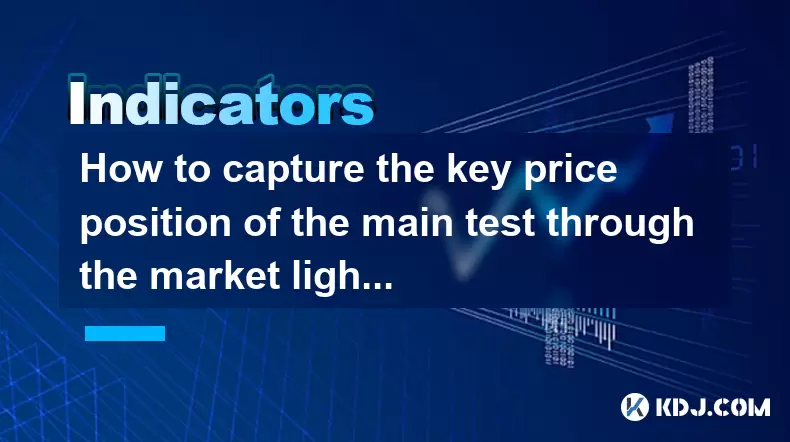
How to capture the key price position of the main test through the market lightning chart?
Jun 02,2025 at 06:07pm
Introduction to Market Lightning ChartThe market lightning chart is a powerful tool used by cryptocurrency traders to visualize price movements and identify key price positions. This chart type provides a detailed view of market activity, allowing traders to spot trends, reversals, and other significant price levels quickly. By understanding how to use ...
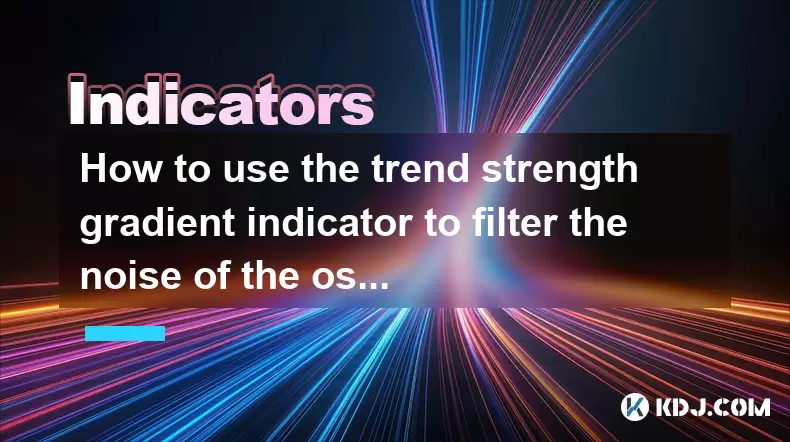
How to use the trend strength gradient indicator to filter the noise of the oscillating market?
Jun 06,2025 at 06:15pm
The trend strength gradient indicator is a powerful tool used by cryptocurrency traders to analyze market trends and filter out the noise that often accompanies oscillating markets. This indicator helps traders identify the strength of a trend, enabling them to make more informed decisions. In this article, we will explore how to effectively use the tre...

How to use the chip precipitation ratio to judge the completion of the medium and long-term bottom construction?
Jun 04,2025 at 03:36am
The chip precipitation ratio is a crucial metric used by investors to assess the accumulation of chips (or shares) at different price levels over time. This ratio helps in understanding the distribution of chips and can be a powerful tool for determining the completion of medium and long-term bottom construction in the cryptocurrency market. By analyzin...

How to capture the starting point of oversold rebound through the moving average gravity reversal strategy?
Jun 04,2025 at 01:01pm
The moving average gravity reversal strategy is a sophisticated approach used by traders to identify potential entry points for buying cryptocurrencies when they are considered oversold. This strategy leverages the concept of moving averages to pinpoint moments when a cryptocurrency might be poised for a rebound. In this article, we will delve into the ...

How to combine the three-dimensional analysis of volume and price to identify the golden buying point of breakthrough and retracement?
Jun 03,2025 at 11:42pm
In the dynamic world of cryptocurrencies, identifying the optimal buying points is crucial for maximizing profits and minimizing risks. One effective method to achieve this is by combining three-dimensional analysis of volume and price to pinpoint the golden buying points during breakouts and retracements. This article will delve into how to use this ap...

How to use the volatility smile curve to predict the option strike price competition area?
Jun 06,2025 at 01:01pm
The volatility smile curve is a graphical representation that shows the implied volatility of options across different strike prices for a given expiration date. It is called a 'smile' because the curve often takes the shape of a smile, with higher implied volatilities for options that are deep in-the-money or deep out-of-the-money, and lower implied vo...

How to capture the key price position of the main test through the market lightning chart?
Jun 02,2025 at 06:07pm
Introduction to Market Lightning ChartThe market lightning chart is a powerful tool used by cryptocurrency traders to visualize price movements and identify key price positions. This chart type provides a detailed view of market activity, allowing traders to spot trends, reversals, and other significant price levels quickly. By understanding how to use ...

How to use the trend strength gradient indicator to filter the noise of the oscillating market?
Jun 06,2025 at 06:15pm
The trend strength gradient indicator is a powerful tool used by cryptocurrency traders to analyze market trends and filter out the noise that often accompanies oscillating markets. This indicator helps traders identify the strength of a trend, enabling them to make more informed decisions. In this article, we will explore how to effectively use the tre...
See all articles

























































































